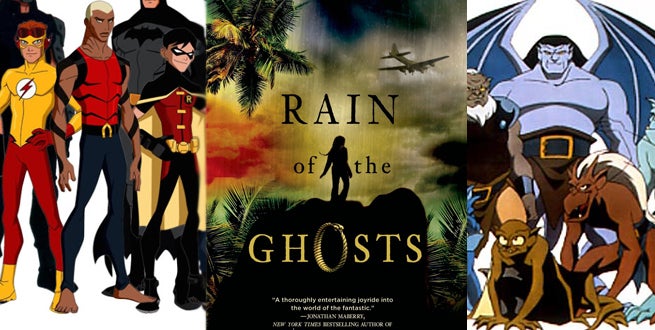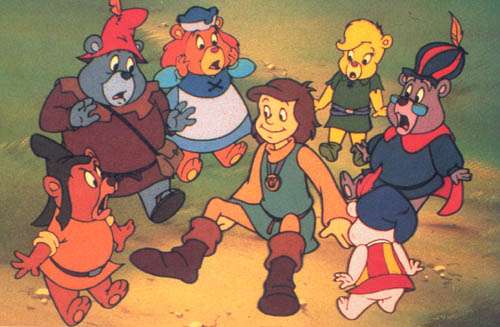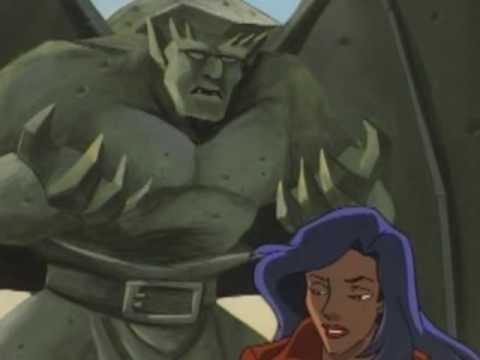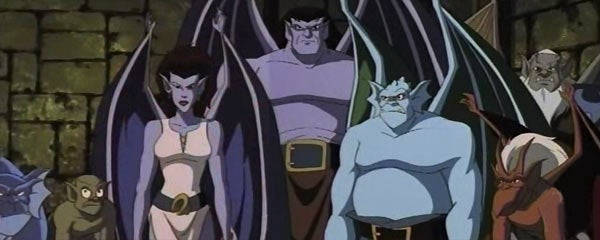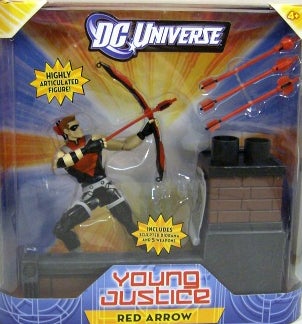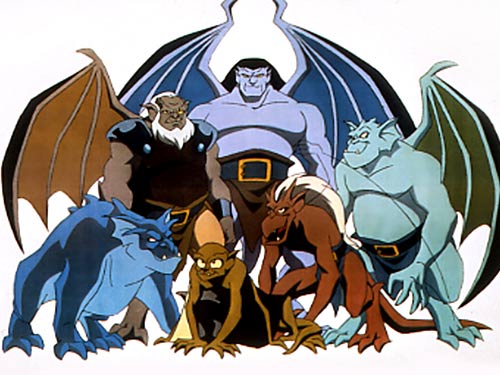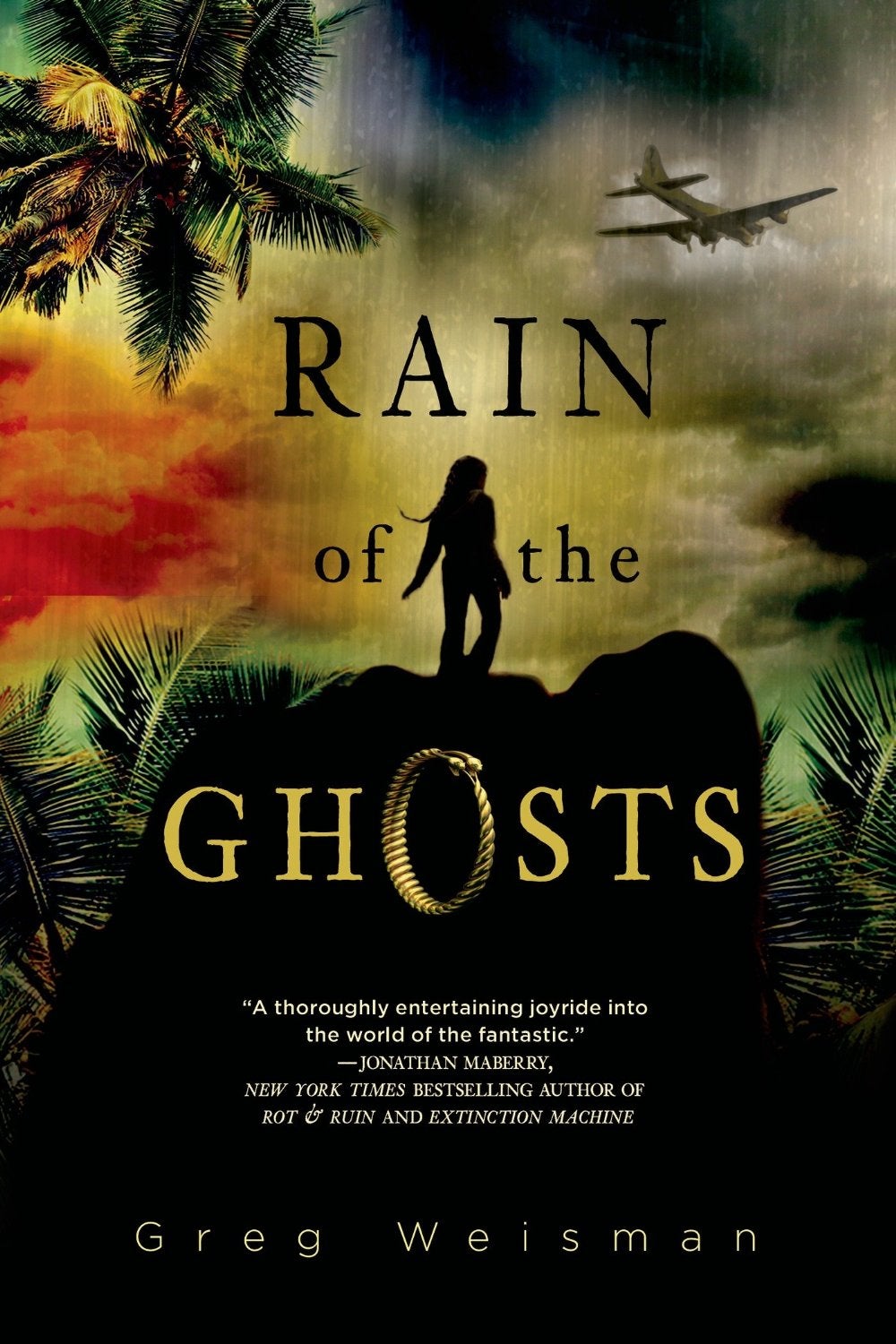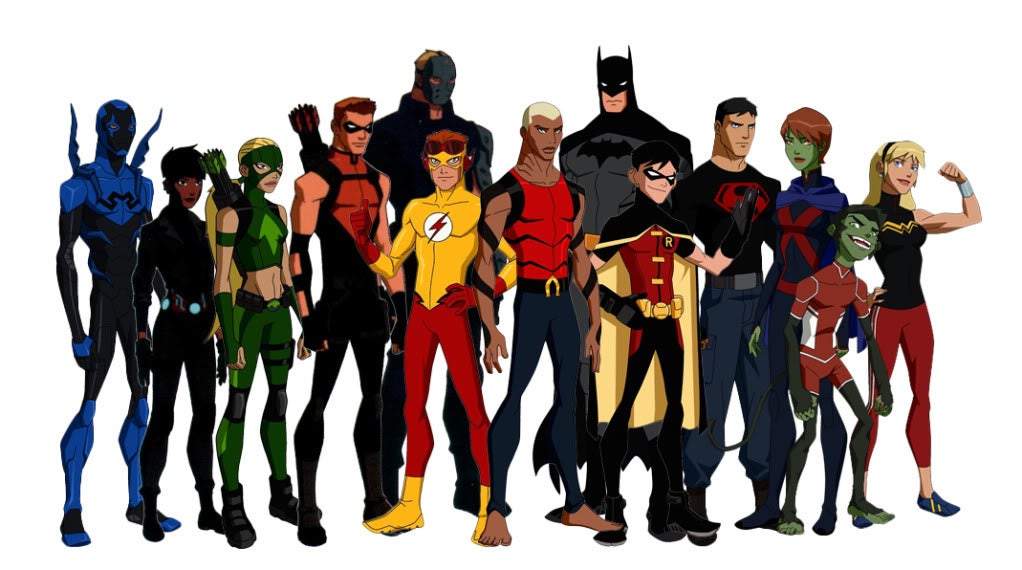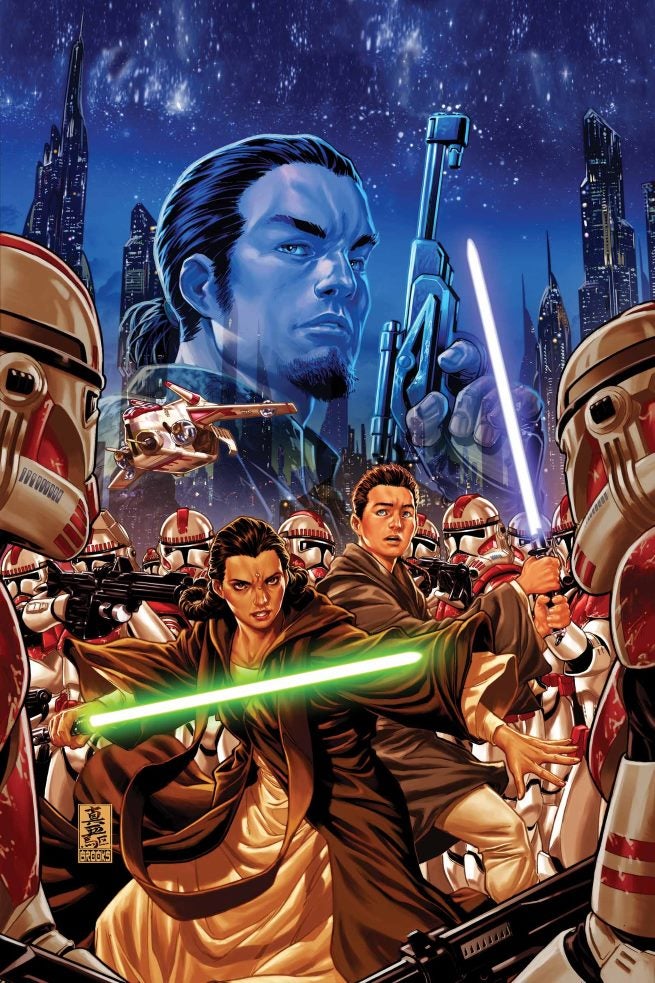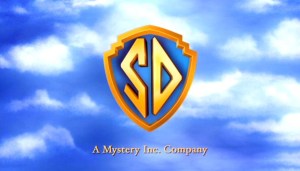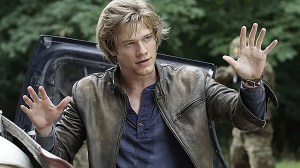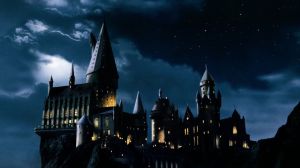Greg Weisman is a titan of animation in the action field, and has left his print firmly on the hearts and minds of comic book fans. Not a day goes by that the writer and producer doesn’t get multiple fan requests to bring back Young Justice, not to mention Spectacular Spider-Man and W.I.T.C.H.
Videos by ComicBook.com
More recently, he helped launch Star Wars Rebels as part of a dream team of executive producers alongside Dave Filoni and Simon Kinberg.
But none of these things would have come to be without one other property of Weisman’s: Gargoyles.
Check out our Throwback Thursday look back at Gargoyles here.
The 1990s Disney Afternoon show was a wholly original property. It wasn’t based off characters from Disney’s yesteryear or from a hit animated film, or even from an existing line of toys. No, it had, as Weisman tells it, more in common with Gummi Bears than any of the existing Disney Afternoon cartoons like TaleSpin or DuckTales.
It’s been nearly 20 years since Gargoyles was on the air, yet even that series still gets “any way you could continue it?” questions on a regular basis, and the creator still has ideas of how he could!
I sat down with Weisman for the first edition of Sunday School, my new column here at ComicBook.com, where we’ll have long form conversations with major players in their fields. Weisman spoke openly about the creation of Gargoyles, the trials and tribulations of animation, the use of multiple genres of storytelling within one show, why romance is so important to animation, and even where toys and merchandise fit into everything (hint: they have a major role in animation’s past, present, and future), specifically as it applied to Gargoyles and Young Justice.
So sit back with your cup of coffee, prop up your legs, and enjoy.
Greg, I want to talk about your career in general and how things have played out for you specifically. Reaching back, first of all, let’s talk about Gargoyles. The series clearly has a special place in your heart, and in fans – I don’t see a day go by in your twitter feed that someone doesn’t ask you a question about it, you have your big Ask Greg message board as well. Can you remember the original pitching time, how that went?
Greg Weisman: Yeah! I tell the story often enough that the memory is very clear, whether it’s accurate or not. As they say in Gargoyles, all things are true, few things are accurate.
We started developing the series in 1991. One of our main inspirations was Disney’s Adventures of the Gummi Bears, which was a show that was created by Jymn Magon, who also co-created TaleSpin among other terrific series.
(sings)”Bouncing here and there and everywhere…”GW: Exactly! Love that show! It had a wonderful, rich backstory and mythology. It was set in a medieval time period, and I honestly felt that it didn’t get enough respect. It was an original cartoon, not based on any toys, and it bothered us that it didn’t get the respect it deserved!
I think the real obvious reason that it didn’t was unfortunate timing. At the same time, there was another show on called Care Bears, and that was, from my point of view, not a great show. It was sort of saccharine sweet. But it’s easy to understand the confusion [from consumers] because both shows were about cute little multi-colored bears. That show was saccharine sweet, and Gummi Bears was named after a candy! So you could understand why people were confused. The first I heard about Gummi Bears I was confused about it, and it wasn’t until I watched the show and realized how wonderful it was that the confusion cleared up.
So we set out very consciously to create a show like Gummi Bears with that kind of rich backstory and mythology to it, but that would get more respect, honestly. So we did a couple things right off the bat with that in mind. One was, instead of cute little multicolored bears, we did cute little multicolored gargoyles! I was always fascinated with gargoyles, going back to High School, just the idea of them. We thought “that’s a little edgier,” instead of these gooey bears we’d have little monsters running around. And the monsters are gonna be the good guys!
The second thing was, we’d have this rich medieval backstory, this mythology, but we’d set the main action of the story in present day New York. That basic idea went into our developing a comedy adventure series called Gargoyles, and we pitched it to Michael Eisner. It was a great show, really fun, it wasn’t what made it on the air, but it would’ve made a really fun comedy with a lot of adventure, fun stuff, a rich story, and all that. Still, a comedy, with all short little cute gargoyles.
theTo get a new perspective, I showed what we had to select people at Walt Disney Animation to get feedback on our pitch. One of the people I showed it to was Tad Stones, another of the great founders of Disney TV Animation. Tad created Rescue Rangers, Darkwing Duck; he took a look at the show and said, “well you’ve got all these little gargoyles – what if instead you had one big Gargoyle.” He referenced Beauty and the Beast, which was a little movie Disney had at the time, and that really just turned a light bulb on over my head. My background prior to animation was in comic books, specifically superhero comic books; we didn’t want to do a dead on superhero, a guy in a cape called “The Gargoyle” or anything like that, but we could do a monster hero, and that idea really appealed to me.
So we took the entire comedy development, the whole show, and put it through the prism of this character Goliath that we had created. Goliath did not exist in the previous comedy development, but pretty much everyone else did, including Xanatos – in the comedy show was called Xavier, and he was kind of a Duke Igthorn or Captain Hook kind of comedic villain. Brooklyn, Lexington, Broadway, Hudson, some of them had different names, but they all existed in the prior development except for Goliath.
Once we took those characters and put them through the idea of Goliath, we came out with an action drama – still lightened with comedy, with romance, with all sorts of fun stuff, but the basic action drama show that people have seen and fans have adored now for 20 years! We pitched that show to Michael Eisner about six months after we had pitched the original version. That was a huge pitch, with loads of art, all these great ideas, mutates and robots, and all sorts of fun stuff that wound up getting in the show, and he passed again! Didn’t like it.
We thought it was over. We had a meeting the next day with Jeffrey Katzenberg, who back then was sort of the head of the Walt Disney Studio, so he was who my bosses reported to, but he reported to Michael. We were talking about the shows that Michael had liked, had bought that day, the day before. At the end of the meeting as we were all getting ready to go, Jeffrey turned to me and said, “and you’re going to work on Gargoyles some more, right?”
I looked at him confused and said, “well, no. We pitched it as a comedy and he passed and we went to drama and he passed…” Jeffrey said, “no, Michael didn’t pass, he just thought it needed more work.” I looked at Bruce and said, “OK, then we’ll do more work on it!” I thought he passed! (laugh) I had done this long enough, I thought I knew a pass, and he had killed the show.
What became clear was that Jeffrey liked it; Jeffrey thought there was something there. I found out later he had talked to Gary about it, and the need to diversify the Disney afternoon long term or else it would begin to deteriorate. He thought there was something there and wanted us to pursue it – he wasn’t going to defy Michael in the meeting, but thought there was something there.
So we went back and started going for it for a third time. We took a close look at the show and decided we didn’t want to change anything. We loved the show and weren’t changing anything. (laughs) So we decided if we weren’t going to change the show, we needed to change the pitch. The problem must be the pitch. And we were right! We cut a ton out of the pitch. All these great ideas, which did get into the show in one form or another, were distracting in the pitch. So we took the pitch down really to the Goliath and Elisa Maza – well, she was called Elisa Chavez back then – but really down to the Goliath and Elisa story, the “Beauty and the Beast” tale that we knew Michael would get and understand. Six months later we went back in with nothing new to the pitch, but a lot that had been taken out. We pitched Gargoyles again as the story of this monster who wakes up in Manhattan and meets this human police detective, and that sold it.
Michael bought the show and away we went! At the end of the pitch, Jeffrey turned to me and said, “you added a lot to that didn’t you!” (laughs) And I said, “Yes, I did.” So we had a show then to produce, and in those days, one of the things that was sort of great, that we didn’t appreciate at the time, was that Michael Eisner was in some ways the last of the moguls. When Eisner said, “make the show,” everyone else at the Walt Disney Company got on board or got out of the way. These days, decisions are made by committee, and not just at Disney, everywhere – you need so many people to sign off on things and divisions are competing, even in this day of theoretical synergy. But in those days, if Michael said “we’re making it,” he was the boss and we were making it. Everyone was great; I was a development executive, I didn’t usually produce the shows myself; I usually found a producer, then gave the show a little shove out the door and wished it well, and moved on to develop the next show. By the time we found our producer, Frank Paur, I was so in love with the show and I knew it was something special, and I wanted to be a part of it. I asked my bosses if I could produce the show with Frank, and with a little hesitation they finally said yes.
So, this massive pitch: is that something, looking back, that you consider a rookie mistake? Is that something you’ve kept in mind in projects since then?
It’s definitely a lesson that, again unfortunately, I’ve had to re-learn over and over and over again (laughs).
I find it interesting that you specifically mentioned, with regards to Gummi Bears, that it was a show the was created outside of a toy line. Obviously we’ve heard from a lot of executives, people over the last couple of years recently, how much toys influence animation, as far as keeping shows on the air. Was that a concern for you at all in the creation of Gargoyles? Or was that sort of a down period for that connection?
GW: They were definitely a concern. We had a license with Kenner Toys at the time on Gargoyles, and we had long conversations about toys. One of the lessons I learned on that front was that you had to respect the toy people, but you also had to take what they were saying with a grain of salt. For example, they were insistent that we give the Gargoyles a flying vehicle! We were like, “they have wings.” They said, “we gotta have it!” So we worked really hard in an episode of Gargoyles to work in a sort of gothic-looking helicopter into the show. We worked it in as elegant a way as we could, which doesn’t necessarily mean it was elegant, just elegant-er than it would’ve been had we not cared.
That makes me instantly think of the Spider-mobile and the Spider-copter… Why would Spidey need those things?
GW: Right, and the fact is, when I was a kid, I was obsessed with the Spider-mobile! (laughs) The fact that it made no sense was a whole other issue. The whole notion of Johnny Storm and Peter Parker working together to create the Spider-mobile endlessly fascinated me. And by the way, when we were doing Spectacular Spider-Man, if we had gotten to season, I think 4, maybe 3, but I think 4, we were going to introduce the Spider-mobile, absolutely.
So I understand that for kids, those vehicles were cool. We worked hard to put that helicopter in there, and they designed a helicopter as a toy, then sort of realized that in order to make it big enough to fit the Gargoyles in, as toys, given their wingspan, the helicopter had to be so big that it was at a price point they felt they couldn’t sell! So they ended up not even making the helicopter that we had worked so hard to give to them. So that taught us a lesson about toys. The fact is, toys were important then, and they were a huge seller for us our first season. They did very well, we were the best-selling boys toy on the market in our first season… and then Power Rangers hit, and it was like we didn’t exist. The toys didn’t continue to do well.
I know this is an ongoing problem with some of the toy companies – one of the things they did was just endless iterations of Goliath, and they didn’t do much with the rest of the characters; a little bit with Brooklyn, Lexington, and Broadway. And they did a Bronx, and they did an Elisa and a Xanatos and a few other things, but mostly they just kept doing Goliath over and over and over again. I’m sure they have their logic, but from our point of view, if I was a kid, I’d say, “Okay, I have Goliath, how about some of the other great characters that are in this show?”
At times it was a very rewarding experience working with the toy companies and the other licensees, and at times a very frustrating experience. It was definitely a part of the equation, and definitely influenced the show, in large ways and small.
That has to be one of the most overlooked aspects by anyone just looking at the animation industry, that it’s also part of the job. You don’t think about that when you’re thinking about a creator making a show that kids will love, that adults can look upon fondly as well or even love themselves; then there’s that whole other business side of things.
Spectacular Spider-Man Young JusticeAfter the fact people say, “well I’ll go out and buy the toys!” Well yeah, now it’s too late! (laughs) You go out, you find a couple toys on eBay, that does nothing for Mattel. I go to all sorts of conventions, and people say, “what can we do?” I’m not sure what you can do for Young Justice now or Gargoyles now, but I’ll tell you one thing: if there’s a show that’s on the air now that you love? Support the merchandise now. Don’t wait until the show gets cancelled then say, “I’ll go buy merchandise!” Support it now. Whatever merchandise they have, DVDs, video games, toys of course, support it now, demonstrate and vote with your wallet that you love this show now. Not later. Later, it will be too late. When a show gets cancelled or has lost momentum, it’s not impossible to bring it back, but it’s damn near impossible to bring it back. But if you support it while it’s on the air, and the toys and tie-ins are making money hand-over-fist, it’s a lot harder for the powers that be to cancel it.
Do you think that is something that needs to shift in the consumer side, in the production side, some combination of the two? It seems like many consumers simply don’t know, that it’s a consumer obligation in order to keep things going.
GW: You know, it is tough to educate, even with the internet, and you feel like you must be reaching so many people but you then run into people who haven’t heard it. Twitter is a perfect example. Because of the ephemeral nature of twitter, I wind up answering the same five questions over and over again, almost on a daily basis, because I’ve tweeted these answers, and I’ve answered them at Ask Greg, my website, but the twitter feed rolls on. No one goes back and says, “oh let me check Greg’s twitter feed and see if he’s answered this already!” An amazingly small, relatively, amount of people even know about AskGregWeisman.com, and when they do got there, they tend to just post a question, they don’t bother to look in the huge archives we have, where I’ve answered 98.5% of the questions already.
So I wind up answering the same questions over and over again, and sometimes that gets annoying, but the fact is, I don’t begrudge it too much. The fact is, educating people about this sort of thing is clearly a problem. It’s also because, you know, a show like Supernatural, just as an example. The ratings on that are so much larger, the numbers are so much bigger than any animated series. People think, “well, I don’t have to go out and buy the merchandise for Supernatural.” The first thing I’d say is, “Well, you probably should!” If you’re buying legit merchandise, of course, as opposed to some knock off or fan-made merchandise they’re selling on Etsy or whatever, you’re supporting the show in a way that the people making the show see, because “ca-ching!” the money’s coming in.
But you have to keep in mind that when the ratings are successful at a primetime level for a show, then the ratings themselves are generating income, because the commercials are generating enough income. So people say, “but there are so many fans of Young Justice, the ratings must have been huge for that show! Why do we need to buy the merchandise, why don’t the ratings work?” Well, for starters, the ratings are not, or were not, at that level. Relative to other animated series, they ratings weren’t bad, but they weren’t home runs either. On our good days, we were a single, and we had bad days. One could argue we had a lot of bad days because of our weird scheduling, we had a lot of hiatuses and then didn’t have a lot of marketing, so the show would come back on the air and people wouldn’t know that new episodes had started up again for two or three weeks. In fact, our ratings tended, when we got back on the air, to rise over time, and get up to a good level, but never up to a prime time level where the ad rates are bringing in so many dollars that it’s helping pay for the show.
So what that means is that the budget for a show like Young Justice is almost entirely based on the money we were getting from Mattel. So when the toy license fails, there’s no money to make the show, period. Every other consideration, every other, “but, but, what about this?” is very secondary. It’s not that those things don’t have elements of truth to them. It’s not that there aren’t reasons the toy line might’ve done better or worse that have nothing to do with fan support. But fundamentally, fans didn’t buy toys in enough numbers to support the toy line. If they had, if the toy line had been successful enough, they would not have canceled it. If we had a successful toy line, we would have had a budget to work with and might have had a third season.
new Young Justice GargoylesIf they bring in one new person, they say “see, look what I did!” And that’s great, I don’t want to knock it. That’s great, now bring in one more, and one more after that, and keep going.
Or 15,000 more!
GW: Yeah, exactly! And make sure your friends are all doing the same thing, because if you’re just watching it and talking amongst yourselves about how great it is, that’s great. I’m not knocking any of that – all that’s good stuff, but none of that will keep the show on the air. That’s just fans talking to each other, and it’s a good thing, but it’s not keeping shows on the air.
It almost sounds like Toy Fair is a more important convention for animation than Comic-Con then.
GW: I think there’s some truth to that statement. It’s great to have a big panel at Comic-Con, and you get, you know, if you’re in one of the big rooms, you get a couple thousand people tweeting and instagramming and blogging about the show. That’s all good, none of it is negative, I don’t want people thinking I’m saying this is bad, it’s all good. But we have to make sure that the stuff that actually pays for the show is there, or else there’s just no show, period! (laughs) There’s just no show! If they don’t sell toys for Green Lantern: The Animated Series, if they don’t make toys for Beware the Batman, then there’s no show. Again, those decisions are complex and lots of factors go into it; I’m not trying to blame the fans, but they have to recognize the reality of the situation.
Looking at the storytelling side, I know you weren’t doing a lot of teleplays for Gargoyles, but what is a storytelling lesson you learned from working on that show that you brought forward into others you’ve worked on?
GW: Well, the main thing is that the method I still use to work today was born in Gargoyles. It’s very low-tech. I’m a low-tech guy, and it’s all about a big bulletin board and a lot of index cards! Back then, I had a phenomenal memory for this kind of stuff, so there’d be like one card per episode, with just a word or two on them to remind me what the springboard was for that idea. Sometimes we’d combine a couple cards and say, “let’s put both of these together for a story.”
Nowadays, I write down every character, every beat, every line of dialogue that we think of, everything, because I have a horrible memory! It’s deteriorated gradually over the last twenty years (laughs). So the bulletin board is very… every episode is thirty or forty cards to it because I don’t trust myself to remember anything anymore. But the basic method of it is the same, which is, get the cards up on the board, take a look at the season as a whole, plan in advance; I’m a big believer in doing the hard work early. I want to know what all the premises are before we get going on a season. I want to make sure that all the story problems are solved at the outline stage. By the time we sit down to write scripts, it’s relatively easy. It’s just about honing the dialogue, making it all feel right, and making it all work, but we’re not still solving problems. Those are all worked out at the outline stage. Those are all lessons I learned producing Gargoyles, and in the second season supervising four different story editors, making sure that we didn’t wind up with four different shows, making sure there was consistency. I didn’t write on Gargoyles personally until the first episode of what became “The Goliath Chronicles.” So I wrote and story edited the first episode of “The Goliath Chronicles,” then left… well, put “left” in quotes, because I was more or less encouraged to leave, but you know. We had great story editors like Michael Reaves, and Gary Sperling, and Cary Bates, and they did phenomenal work, and I learned a lot from those guys. But those are lessons I took forward into the shows I did after that, both as a writer and as a story editor, and obviously as a producer.
I know you’ve been asked a million times if you’d go back to Gargoyles or to Young Justice for that matter by fans on twitter, and you always say yes. Would either of those projects be kind of a “drop everything” project if you had a real chance at it, or are you comfortable with where you are now, contributing to different stories, writing your novels, you’re obviously keeping busy?
GW: Yeah, I have to keep busy because I’ve gotta earn a living! (laughs)
Gargoyles, you know, first off, most of the jobs I do I’m contracted to do. So I can’t “drop everything” in the sense of instantaneously saying “I’m no longer doing this” because I’d get sued! But short of that, Gargoyles is, without a doubt, the one thing that given the opportunity, nothing would stop me from working on it, from finding a way to make it work. Young Justice is pretty close to that, and frankly, Spectacular Spider-Man and W.I.T.C.H. aren’t too far away from that either.
But Gargoyles is and always will be my baby, and from a television standpoint, my first love. I’m still dying to do more Gargoyles comic books. We did 18 issues with SLG publishing that I’m very proud of, and turned out really great – we [the creators] think of that as the real, canonical third season of the show. I would love to do more comics, I’d love to do more episodes, I’d love to do anything with Gargoyles, quite frankly. And there are a lot of people who feel the same way.
Gargoyles conventions Gargoyles Gargoyles GargoylesYou’ve obviously created a lot since Gargoyles, both in licensed and work for hire things, and your own work, your own novels and things just from your mind. Do you feel like you have another “Gargoyles” in you, as far as something that you’d bring into the animation world or live action, something like that?
GW: Well I’ve written two novels. The first is called “Rain of the Ghosts,” and the second, a sequel, is called “Spirits of Ash and Foam.” Those are the first two books in a book series that I hope to continue writing. Those were originally developed at Dreamworks Animation as an animated TV series. We sold it to Nickelodeon, but for all sorts of reasons beyond our control, the show never got made. I worked for Jeffrey Katzenberg for seven years at Disney and three years at Dreamworks, and I asked him if he would give me the publishing rights back, to “Rain of the Ghosts,” as I had created it, but while I was on staff at Dreamworks, so they owned it. He gave me the rights back, which he didn’t have to do, it was very nice of him. But I wrote the first novel, and later the second one, and I’m trying now to sell it, frankly, in live action, as a series of movies. We think the stories are big enough that each book could make a great film. But I’d be happy to do it as a cartoon series again, and I think it’d make a terrific one.
I’m very proud of these books, and if your readers like Gargoyles, like the work I’ve done on Young Justice or wherever, I’m confident they’d like Rain. She’s a great character, it’s a really interesting world with a lot of rich mythology to the story, just as there was in Gargoyles. In fact, “Rain” was one of the first things that I developed right after I was done with Gargoyles. I went right from there to Dreamworks, where I developed “Rain,” so I was in the mindset there, in creating something that I think is truly original and tells really great stories.
So again, I’m very proud of these two books, and the more the books sell, the more likely it is that someone will want to make a movie or a TV show, live-action or animation. So, you know, if people would buy my books, I’d really appreciate it! (laughs) Obviously!
GW: Yeah, it’s like we were saying! It’s great to say after the fact, “oh, I love Greg’s stuff, I’d love to see a new TV show or a movie by him!” You know, help out now, not later! (laughs) Buy the book, and if you’ve bought it, help me spread the word about it! If you read it, and you like it, put a review up on Amazon, I’m told that helps a lot. Tell your friends about it, if you’re buying presents, buy a copy for someone! That’s what helps, we need those sales now, not later!
I wanted to ask you, I feel like – and maybe I’m misremembering the TV shows, the cartoons from my childhood, but I don’t remember romance being a major plot point in the cartoons of the 80s and before, or even the early 90s. It seemed fairly revolutionary to have romantic subplots in Gargoyles. Romantic plots are something you’ve carried on into your other work in animation as well. What is it that makes that important to storytelling to you? Is it a shift in culture that allows that as a subplot in animation?
GW: I don’t know about a shift in culture, I don’t even feel qualified to talk about that, quite frankly!
But I will say, for me, it’s an important element. Again, I come from comic books, where the love life of Peter Parker was an important element of what Stan and Steve, and Stan and John Romita, Sr. did. When I pitched Spectacular Spider-Man to Sony and Marvel, one of the first things they said was, “well what about Mary Jane.” The movies had come out, the first couple Raimi Spider-Man films, and I said, “You know, we’re doing Peter in high school. So Peter Parker is madly, passionately in love with whatever girl happens to be standing in front of him at any given moment!”
The idea was that this was a kid who was 16, and hormone enriched, and distractible! (laughs) Then over time, his feelings would start to be revealed to him, and you know that was part of the soap opera that they created in the first place.
GargoylesNow obviously, not all the studios, toy companies, networks, etc. love that idea. They have at times, in my opinion, learned the wrong lessons, from things like focus groups. They’ve come to believe the conventional wisdom, which has existed for decades, that “boys don’t like that stuff.” So if we’re doing an action show, “A: That’s a show for boys!” It’s “okay if girls watch too,” no one objected to that, but you have to make sure you’re getting the boys. So if you put romance stuff in, boys go ew and turn away. I don’t think that’s true. I’ve never, ever seen that to actually be true.
What is true, is that if you go into a focus group and you ask boys “what do you think of the romance,” they will, knee jerk go, “Ew, I don’t like that!” Because they’ve been socialized to not like that stuff. But if you just include it and you don’t ask them the dead-on question, they’re just as fascinated with the Goliath and Elisa relationship as the female viewers are, 98% of the time. That’s been my experience. When you ask them the question dead-on, they’ll fold to the conventional wisdom.
Right, especially when they’re in a room with a bunch of their peers.
GW: Especially! But if you don’t ask the question dead-on, or say, “What do you think of Goliath and Elisa?” They say, “They’re cool! I like how they get along, I like how they work together!” They find ways to express the way they like the relationship that isn’t about the kissing. And even the kissing, yeah, there are some boys who will turn away, but A) I think there are fewer and fewer of those, but mostly, I think they only turn away if someone is watching them watch. The reality in my experience, anecdotally as it may be, is that they’re as interested – and I’m talking about young boys, ages 6-11, which is almost always the target audience of shows I work on. Now, when I say target audience, that doesn’t mean exclusive audience. No one is every looking to exclude people or other demographics, they just want to make sure that at minimum, you’re hitting the target. Which I get, and have always gotten.
Yeah, that’s a thing that gets a kneejerk reaction out of some fans, thinking that they’re not being included. I guess it’s the exclusive nature of the word “Target,” that it doesn’t really have many synonyms, other ways to look at it.
gotWhat I try to do in the shows that I write and produce is do them on multiple layers. I want there to be levels for each, so the youngest kids, even the four year-olds, they have a lot of explosions, colorful monsters and characters, some funny dialogue, stuff for even the youngest kid to enjoy. But there’s other stuff in there, you know, I’m 51, for a guy like me to enjoy! Or someone who’s 16 or 60 or whatever! The trick to it is that you can’t write to these audiences in a way that the youngest audience doesn’t know what’s going on. It has to work for them in a way that they can get it, but then there’s more there for the hardcore fan or whatever.
If you’re doing a show – I’ve done many, whether it’s Star Wars Rebels or Young Justice, or Spider-Man, based on pre-existing material, or picking up on pre-existing material, and fan service is fun! I don’t mean that in an anime sense (laughs) but I mean throwing in that Easter Egg reference to the spice mines or whatever. That’s great. What’s great about it is that the hardcore fan knows where that reference comes from. “We finally get to see this place, cool!” But for the new viewer, the 7 year-old who hasn’t been watching Star Wars for 300 years, they don’t need to know that it already existed. They’re seeing it for the first time and it’s cool for them just because it’s cool! We’re showing them this cool spice mine! That’s working on layers.
So you can’t ever be exclusionary to the target you need to hit, but you should also be inclusive to older audiences, to both genders, to different orientations, whatever. I’m a big proponent of diversity in cartoons, especially. I think there’s been a dearth of diversity, often. I think there are some tremendous exceptions, and I like to think that some of the shows I’ve done have been exceptions to that rule, but it’s something that I’ve worked at, consciously! I try and create a world that reflects the world that I see, not the world that’s on television, which largely is white and male. I want the world I actually see out the window, and that’s important, very important to me. Now I’m white and male, I have nothing against white males! (laughs) But there’s no doubt that they are statistically over-represented in mainstream media. Almost every other group you can think of is statistically under-represented, and I think that’s got to change. It does change incrementally over time, but we’re so far behind the mark that we have to do more than meander towards equality, we have to make strides towards it.
I forgot what the original question was, but I hope I got to it there. (laughs)
GW: Well, I have Star Wars: Kanan coming out in April, it’s a five-issue arc in what will beyond me be an ongoing comic book series at Marvel Comics. I’m doing the first five issues, and I’m very; I just started writing the script to issue 4, and I’m very proud of the first three issues that are done. The artwork by Pepe Larraz on the book is just so gorgeous. I’m so excited for people to see that in a few months. So I’ll ask your readers to keep an eye out for Star Wars: Kanan!
And then of course, again, I’m very proud of my two novels, “Rain of the Ghosts” and “Spirits of Ash and Foam,” and that’s not something owned by a big studio, that’s something just created by me, and if your readers support those books I’ll make more of them, and that would really mean a lot to me.

